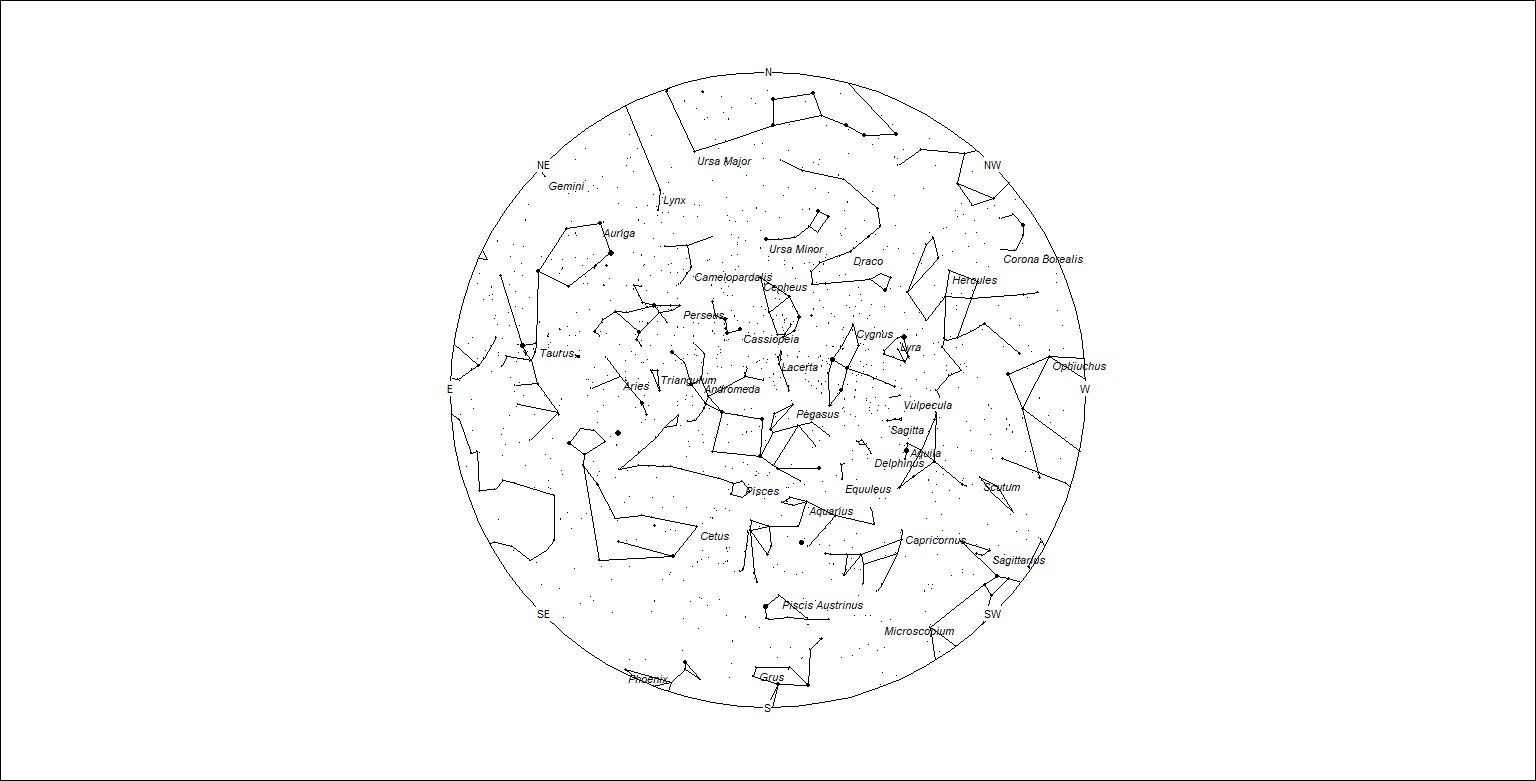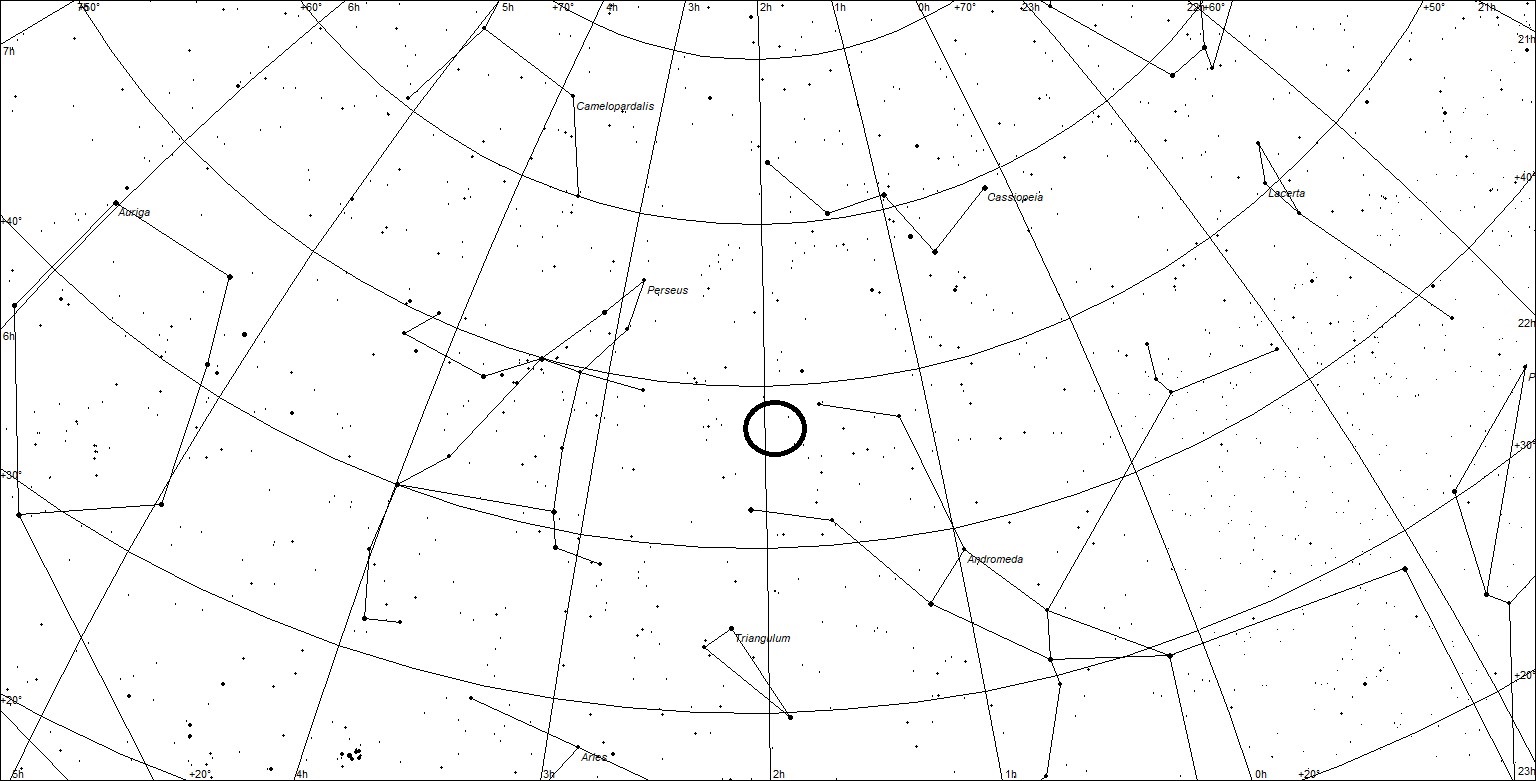

In early December 2011, astronomers were surprised by an outburst of mostly faint meteors radiating from the constellation of Cassiopeia. Subsequent studies revealed that these meteors were related to the 1649 perihelion passage of the long lost comet known as 3D/Biela. This comet is well known for the Andromedid meteor storms produced in 1872 and 1885. These studies also revealed a possible stronger display of these meteors occurring in 2023. These meteors are now known as the December phi Cassiopeiids (DPC) #446 and are not related to the annual Andromedids nor the Andromedid outburst of 28 November 2021. They encounter the Earth from November 28 through December 10, with a variable date of maximum activity within that range. The 2011 display was discovered through radar and video observations with an estimated zenith hourly rate near 50. The possible display this year is predicted to peak near 19:00 Universal Time on December 2nd, which favors Europe, northern Africa, and western Asia. The sun sets in North America some 3-4 hours after the predicted outburst. Should the activity occur later than expected, this would be a prime area to view from. No matter your location, it is advisable that observers scan the skies in late November and early December and report any activity from this source. Most meteors were faint during the 2011 display, but those captured on video cameras would have been bright enough to have been seen visually by an observer. Dark skies away from urban areas would be extremely helpful in detecting these meteors. Unfortunately, a waning gibbous moon will rise during the mid-evening hours so dark skies will be limited to the time between dusk and moon rise. The radiant, located in Andromeda for the 2023 display, is well placed nearly overhead for mid-northern observers as soon as it becomes dark. These meteors will be extremely slow compared to most shower meteors. The radiant area will also be large compared to showers such as the Leonids and Geminids. Both the timing and the radiant area may be in error so observers all over the world should attempt to monitor this activity in case predictions are off.
Should you observe during this time, be sure to share your observations with the International Meteor Organization. You will need to fill out a visual meteor report form located at: https://www.imo.net/members/imo_registration/login/?redirect=/members/imo_observation/add_session . This is only available to registered members, but this option is free to those who just wish to contribute data. Should we receive enough data, we will follow up with a summary of results on this event. Note that the December phi Cassiopeiids are not listed among the showers in the observing form and must be added manually. The expected position of this radiant is α = 29◦, δ = +47◦ with a velocity of 16km/sec.
In conclusion, this is one of those events that give astronomers a black eye in the view of the public. The press will pick it up and blow it out of proportion and the public will be disappointed when the sky is not full of meteors. It is most likely that nothing will happen. It’s also possible that it will occur, but no one will see it if the meteors are too faint. One should approach viewing this with the mindset that they will see nothing extraordinary. If you manage to observe one of these meteors, enjoy the moment as you are seeing a little bit of history as a small piece of rubble that has been floating in space since 1649, ends its existence in a silent streak of light through the heavens above.
REFERENCES:
Paul A. Wiegert, Peter G. Brown, Robert J. Weryk, and Daniel K. Wong, 2013, THE RETURN OF THE ANDROMEDIDS METEOR SHOWER
Masahiro Koseki, The Andromedids (#0018AND), 2022
Jürgen Rendtel, 2023 IMO Meteor Shower Calendar, 2022, Page 13
 American Meteor Society
American Meteor Society